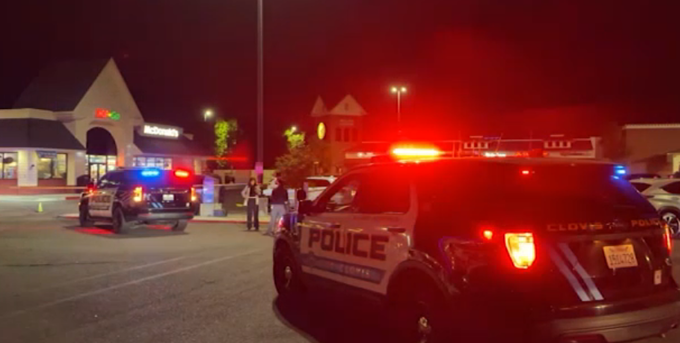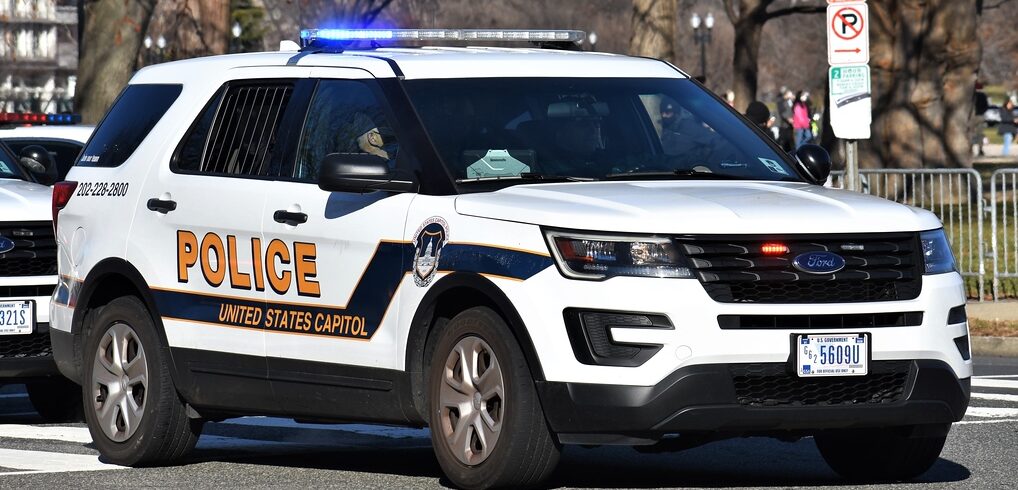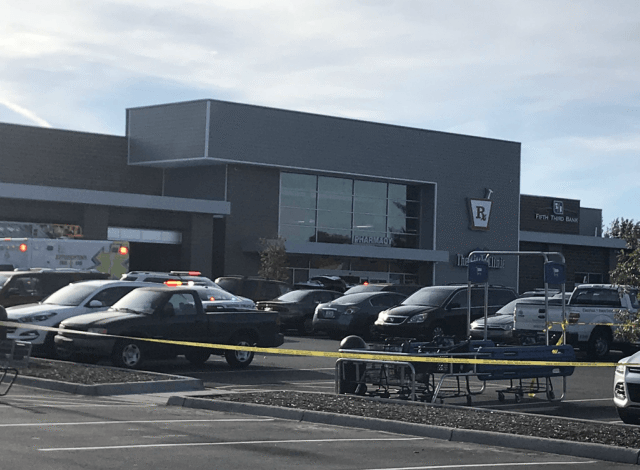
Milwaukee Police Investigating Double Shooting That Leaves One Teen Dead, Another Critically Injured: A Deep Dive into the Tragic Incident
Milwaukee, WI — On the afternoon of Friday, May 2, 2025, the Milwaukee Police Department was called to the scene of a tragic double shooting that has left the community shaken. Two teenage boys were found suffering from gunshot wounds near 75th Street and Northridge Lakes Boulevard, a location that, in the midst of the city’s far northwest side, has become an unlikely site for such an appalling crime.
The victims, aged 14 and 16, were found with life-threatening injuries. The 14-year-old, whose identity remains withheld, was transported to a nearby hospital where he was later pronounced dead. The 16-year-old, also critically injured, remains in the hospital with his condition still deemed severe. A separate but potentially related incident unfolded shortly after, involving a 17-year-old female found near 35th Street and Concordia Avenue, with a gunshot wound to her shoulder. She was swiftly taken for treatment and is expected to survive, according to authorities.
As of now, Milwaukee Police have not confirmed whether the two incidents are connected but both remain under active investigation. The police are still working tirelessly to piece together the circumstances surrounding the shootings. The identities of the victims have not been publicly released, and no suspects have been taken into custody. This disturbing event has left more questions than answers, and the authorities are urging the public to come forward with any information they may have to assist in the investigation.
In this article, we will explore the details of this tragic incident, the broader context of youth violence in Milwaukee, the impact it has on the community, and the steps authorities and local organizations are taking to combat gun violence among young people. We will also dive into the potential links between the various shooting incidents reported in Milwaukee, consider expert insights on the rise in youth gun violence, and reflect on the lasting implications for the city and its residents.
A Detailed Timeline of the Shooting Incident
The timeline of events surrounding the double shooting in Milwaukee begins shortly after 1:00 p.m. on Friday, May 2, when reports of gunfire flooded into the Milwaukee Police Department. Officers responded quickly, rushing to the scene near 75th Street and Northridge Lakes Boulevard, where they discovered two juvenile victims suffering from gunshot wounds. As the police arrived at the scene, they found the 14-year-old male with life-threatening injuries, immediately moving him to a nearby hospital.
Despite the best efforts of medical professionals, the 14-year-old was pronounced deceased shortly after arrival at the hospital. The 16-year-old male, who had also been critically wounded, was transported to another local hospital, where he remains in critical condition. Authorities have not provided any updates on his condition as of the latest reports, but his status underscores the severe nature of the attack.
In a separate incident, a 17-year-old female was found around 3:30 p.m. on the same day near 35th Street and Concordia Avenue, suffering from a gunshot wound to her shoulder. She was also transported to a local hospital and is expected to survive her injuries. Though the police have not confirmed whether the incidents are connected, the timing and proximity of the shootings suggest they may be related.
The City’s Struggle with Gun Violence
Milwaukee, like many urban areas across the United States, has been grappling with an ongoing issue of gun violence. The rise in youth violence has been particularly concerning, with the city seeing an uptick in shootings involving minors in recent years. According to a report released by the Milwaukee Police Department, gun violence among teenagers has become one of the leading concerns for law enforcement and community organizations. In 2024 alone, there were more than 100 shootings involving juveniles, a troubling statistic that reflects broader trends in American cities.
The Milwaukee Police Department has been working to address this issue, partnering with local organizations, schools, and neighborhood leaders to reduce youth violence. Initiatives like community policing, youth intervention programs, and efforts to reduce the availability of firearms in underserved areas have been implemented with varying levels of success. However, despite these efforts, the situation remains dire, with many young people still falling victim to or perpetrating gun violence.
The two incidents on May 2 are a stark reminder of how quickly things can escalate in neighborhoods that have long struggled with systemic issues of poverty, lack of opportunity, and a high prevalence of guns. These factors combine to create an environment where youth violence thrives, with many young people becoming caught up in a cycle of violence that is difficult to break.
Context of Gun Violence in Milwaukee’s Northwest Side
The shooting near 75th Street and Northridge Lakes Boulevard took place in a neighborhood that has been increasingly affected by gun violence. While historically, areas like Milwaukee’s northwest side have faced socio-economic challenges, the recent uptick in gun violence among young people has made it a focal point for local law enforcement and city officials.
Milwaukee has long struggled with high levels of poverty, particularly in certain neighborhoods where opportunities for young people are limited. This lack of opportunity has fueled feelings of hopelessness, pushing some teens toward gang involvement, criminal activity, and, in many cases, violence. The rise in gun violence has exacerbated these issues, making it even harder for young people to escape the cycle of poverty and crime.
Local community leaders and organizations are calling for more investment in mental health services, job training programs, and community centers where young people can find support and guidance. Many believe that by addressing the root causes of violence—such as poverty, lack of educational opportunities, and mental health struggles—Milwaukee can begin to reduce the frequency of these senseless shootings.
Experts Weigh In: Why Are Teenagers Turning to Guns?
To understand the deeper context of youth violence, it is important to consider why young people are increasingly turning to guns. Experts suggest that several factors contribute to the rise in teenage gun violence, including:
- Access to Firearms: One of the most significant contributors to youth gun violence is the easy availability of firearms. Milwaukee, like many urban centers, has a high rate of illegal gun sales, making it easier for young people to access weapons. Many teenagers obtain firearms through family members, friends, or the black market, which fuels the problem of gun violence.
- Gang Involvement: A significant portion of youth violence in Milwaukee is tied to gang activity. Gangs often provide a sense of belonging and protection, especially in underserved communities. For many young people, involvement in gangs is seen as a way to gain status, money, and power. Unfortunately, this often leads to conflicts with rival groups, resulting in gun violence.
- The Influence of Social Media: Social media has also played a role in escalating youth violence. Platforms like Instagram, Facebook, and Snapchat often serve as spaces where young people boast about their street credibility, post pictures with guns, and make threats toward others. These online interactions can quickly spill over into real-life violence, especially if tensions are already high in the community.
- Trauma and Mental Health: Many young people in Milwaukee have experienced trauma, whether through violence in their neighborhoods, unstable home environments, or personal loss. This trauma can manifest in a variety of ways, including increased aggression, fear, and distrust of authority. Mental health experts argue that without proper support, many teens are left to cope with these emotions in unhealthy ways, such as resorting to violence.
The Role of Community and Law Enforcement
While the authorities continue to investigate these tragic shootings, local community organizations have stepped up to offer support. Groups like the Milwaukee Coalition for Youth Violence Prevention and the City of Milwaukee’s Office of Violence Prevention are working to address the systemic issues that lead to youth violence. These organizations aim to provide young people with mentorship, job opportunities, and access to education, as well as advocating for better gun control laws and mental health services.
Law enforcement agencies are also working on strategies to tackle gun violence. The Milwaukee Police Department has implemented various community policing efforts, where officers work more closely with local residents to build trust and prevent crime before it happens. Additionally, the department has increased patrols in high-crime areas and focused efforts on reducing the illegal sale of firearms.
Despite these efforts, there is still much work to be done. Experts argue that a more holistic approach is needed—one that includes not just law enforcement, but also education, mental health support, and economic development in communities most affected by violence.
Calls for Action and Solutions
In response to the shooting on May 2, community leaders are calling for more immediate action to address the underlying causes of youth violence. Advocates are urging the city to invest more in youth programs, mental health services, and strategies to reduce the prevalence of guns in the community.
“There’s no quick fix for these issues,” said one local advocate. “But we can start by giving these young people a reason to hope. We need to offer them opportunities and help them see that there is a better way to live.”
The Milwaukee Police Department has also promised to remain vigilant and continue working with community partners to solve these cases. Authorities are encouraging anyone with information about the shooting to come forward and help bring justice to the victims.
The Broader Implications for Milwaukee and Beyond
This tragedy is part of a broader issue facing not only Milwaukee but many American cities: the persistent problem of youth violence and gun-related deaths. While Milwaukee is not alone in grappling with these issues, the city’s response to these incidents will likely have ripple effects across the state and the nation.
The rise in youth gun violence has led to a national conversation about gun control, with lawmakers at both the state and federal levels facing increasing pressure to implement stricter regulations. Many advocate for background checks, restrictions on high-capacity magazines, and measures to reduce the illegal flow of firearms into communities.
The future of Milwaukee—and the lives of countless young people—may depend on the actions taken now to address the root causes of violence and to offer hope to those who feel trapped in a cycle of poverty and crime.
Conclusion
The double shooting on Milwaukee’s far northwest side is a tragic reminder of the growing problem of youth violence in American cities. While the investigation continues, the city’s response to this crisis will determine whether the violence will continue to escalate or whether Milwaukee can take steps toward a safer, more hopeful future for its young people. The lives of the two victims, as well as the ongoing recovery of the 16-year-old survivor, highlight the urgent need for action to combat gun violence and to create a safer, more supportive environment for the next generation.



